In this episode, we sat down with Yohei Miyake, a Lead Engineer in charge of visuals and cinematics.
Hear all about why Miyake-san ended up becoming an engineer despite aspiring to become an artist, something his senior said that made him become enamored with the game industry, as well as how his love for games that is so deep that he develops games outside of work as well.
We also asked him about what he feels is most important when working in a team, drawing from his experience with working on a major hit title since its inception. This article could teach you something you can apply to your work, so please give it a read!
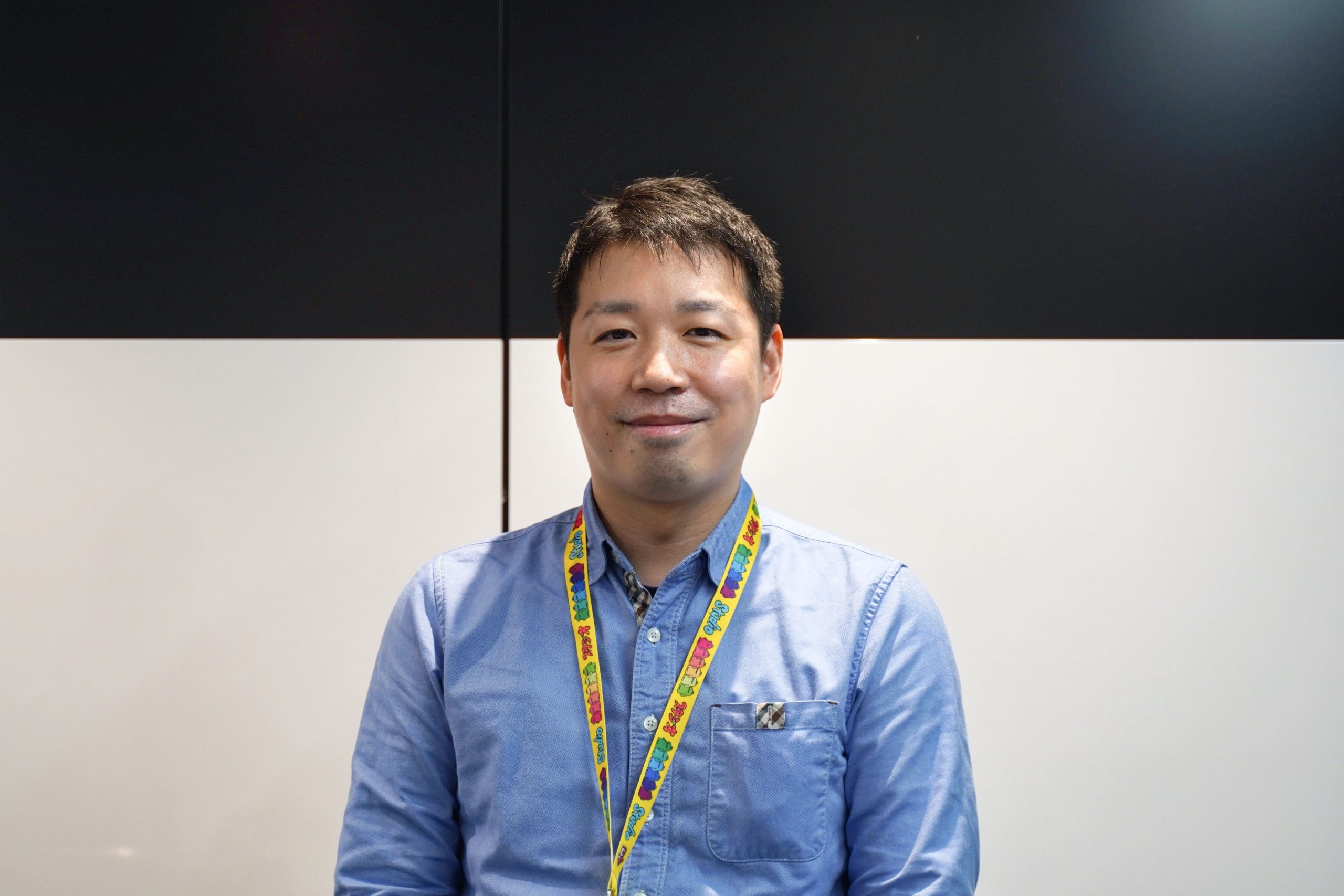 Yohei Miyake, Lead Engineer
Yohei Miyake, Lead Engineer
Affiliation: Studio 3, Group 2, Production 5, Technical Section, Tech/Directing Part
――― Could you briefly tell us about your department and what you do for work?
I currently belong to a department called Studio 3 Group 2 Production 5, and I’m the leader of the direction section, which works on programming the visuals in a new game. In terms of profession, I would be an engineer.
I build programs for in-game graphics and cinematics, make tools to achieve the visuals I want, and propose new looks. My job covers basically everything that has to do with the visual aspects of a game.
For example, for an object that is in a specific place, I create the setup that dictates which part would be bright and which part would be in the shadow when the light source is in a specific location.
When it comes to how things look, there is a profession that heavily leans towards graphics, called technical artist. However, rather than being a graphics specialist, what I do is more in a middle position between them and the client engineers who oversee the programming part of the game.
――― You take on the important role of being the connection between the artists that create the internal graphics and the engineers who realize them. What did you do before joining Bandai Namco Studios?
I worked at another game company before joining Bandai Namco Studios around two and a half years ago.
I specialized on user interfaces, which refers to the buttons you tap in-game and the score displays.
And before that, I also worked on visuals at another game company, so even though I’ve changed companies, the job that I do has stayed the same.
――― I see, so you’ve been involved with the visual presentations of games up until now. What made you interested in everything about game graphics rather than areas such as character design?
My father is actually an artist, and I aspired to be one as well. I’ve always enjoyed being artistic and enrolled in a gaming vocational school because I wanted to make the characters I created move.
While I did also study character design there, my grades in programming were better than expected. Above all else, I also discovered that you can create drawings using programs. From there, I learned to create various movements for the characters as well as various visual expressions and now here I am.
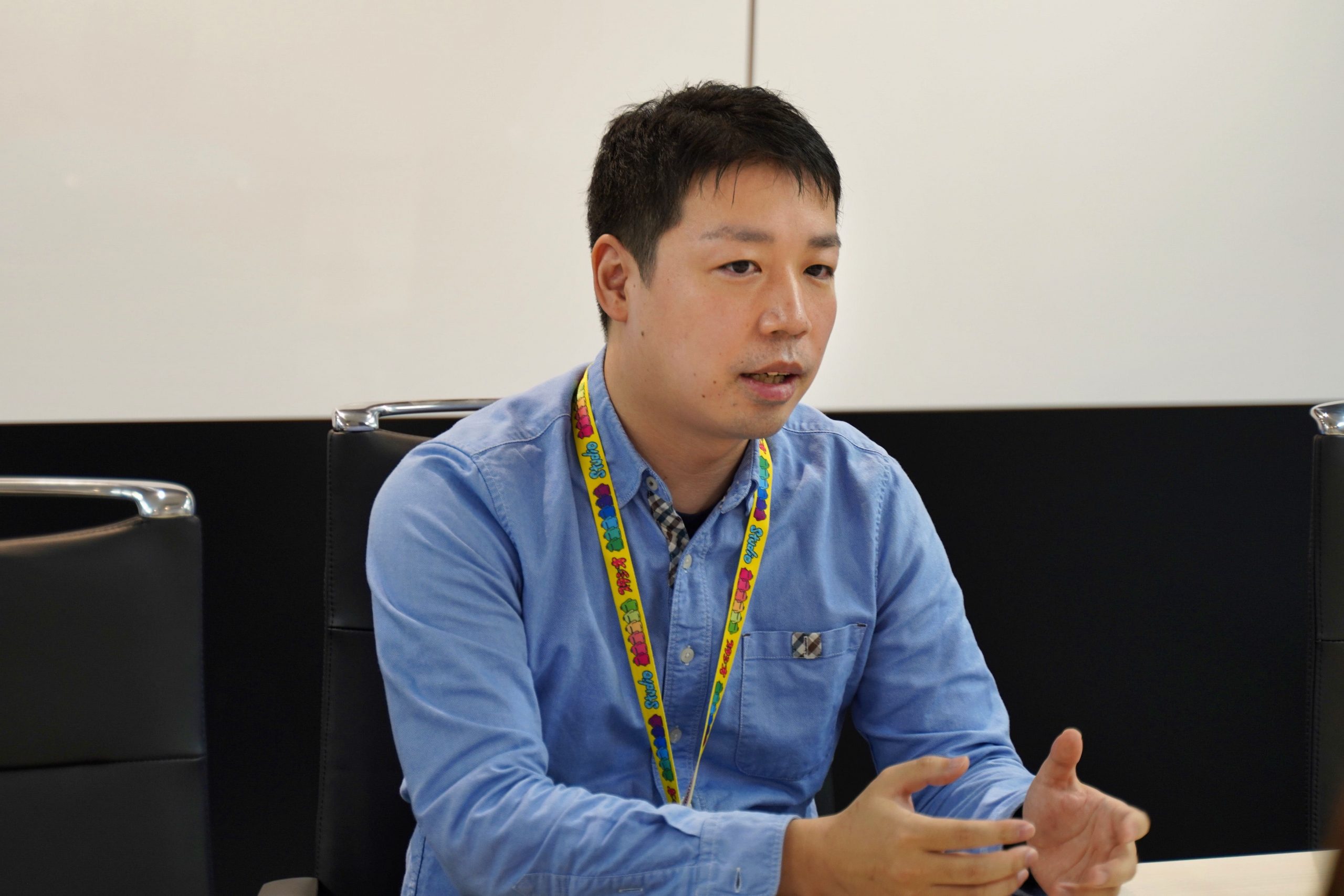
――― I see, so you originally wanted to be an artist. What are you currently working on?
I currently work on game development using a development environment called Unity. This system is in a transitional period where things are changing at an extremely fast pace right now.
Among them, a new rendering system called UniversalRP is becoming mainstream, and I’m struggling to keep up with the changes (laughs). There are major updates about twice a year, and so I have to incorporate them every six months.
While new visuals become possible every day, sometimes we lose the ability to create looks that were once possible. That is where technical research comes into play and that’s also where I find it fulfilling to take on challenges.
――― With Unity being free to use, it is now easier for the general public to try their hand at making games.
That’s right. I think it is great that game creation is much more accessible now. However, in order to fine tune some parts, you would need to have a thorough understanding of Unity’s internal works.
There is a basic manual for Unity, but following it means you end up with something that you can easily tell was made in Unity.
Because Unity is so commonly used, I always struggle with making things unique or adding in the company’s colors to what we’re working on.
――― So in your current position as the leader of the graphics team, what are some things you take extra care with?
In terms of technology, we put our efforts into creating beautiful visuals with materials that are as light as possible. For example, if we include elements that have a very large file size or try to add very detailed images to a game for the purpose of improving the presentation, it will end up very slow.
The balance in these areas is very important, so great graphics do not simply mean making object data as rich as possible, but rather how to make it look beautiful with fewer materials. We are particularly creative in this area.
――― The visuals created by artists are usually very detailed and high resolution, which could add to the difficulty in balancing that with game performance. How do you bring the opinions of both sides together?
This is an extremely difficult part of my job! (laughs) We write programs to incorporate what the artists have created for us. However, if the data is obviously too large, we will let them know and have them cut it down.
Through communication, I always try to find where we can all reach an agreement. I also try to find out where their dissatisfactions lie and make suggestions from a programming standpoint.
Artists do not necessarily know much about programs, but in the end, games work based on the programming.
That’s why I try to think about what the artists want to do from a programming perspective and make proposals to them, so we can make progress while keeping both parties on the same page.
――― Do you set aside quite a lot of time to sit down and have these discussions?
Yes, I do. But nowadays, we are working mainly remotely, and so communication is inevitably text-based. I place importance on supplementing my explanations with images, because I think visuals can be extremely persuasive.
For example, when discussing how much to compress the resolution of an image, it would be a bad idea to just say, “I’ll reduce this image by half!” Instead, I make sure to show it in a way that makes it easy for them to visualize what it’ll look like when the image is compressed into half of its original size and ask for their feedback on that.
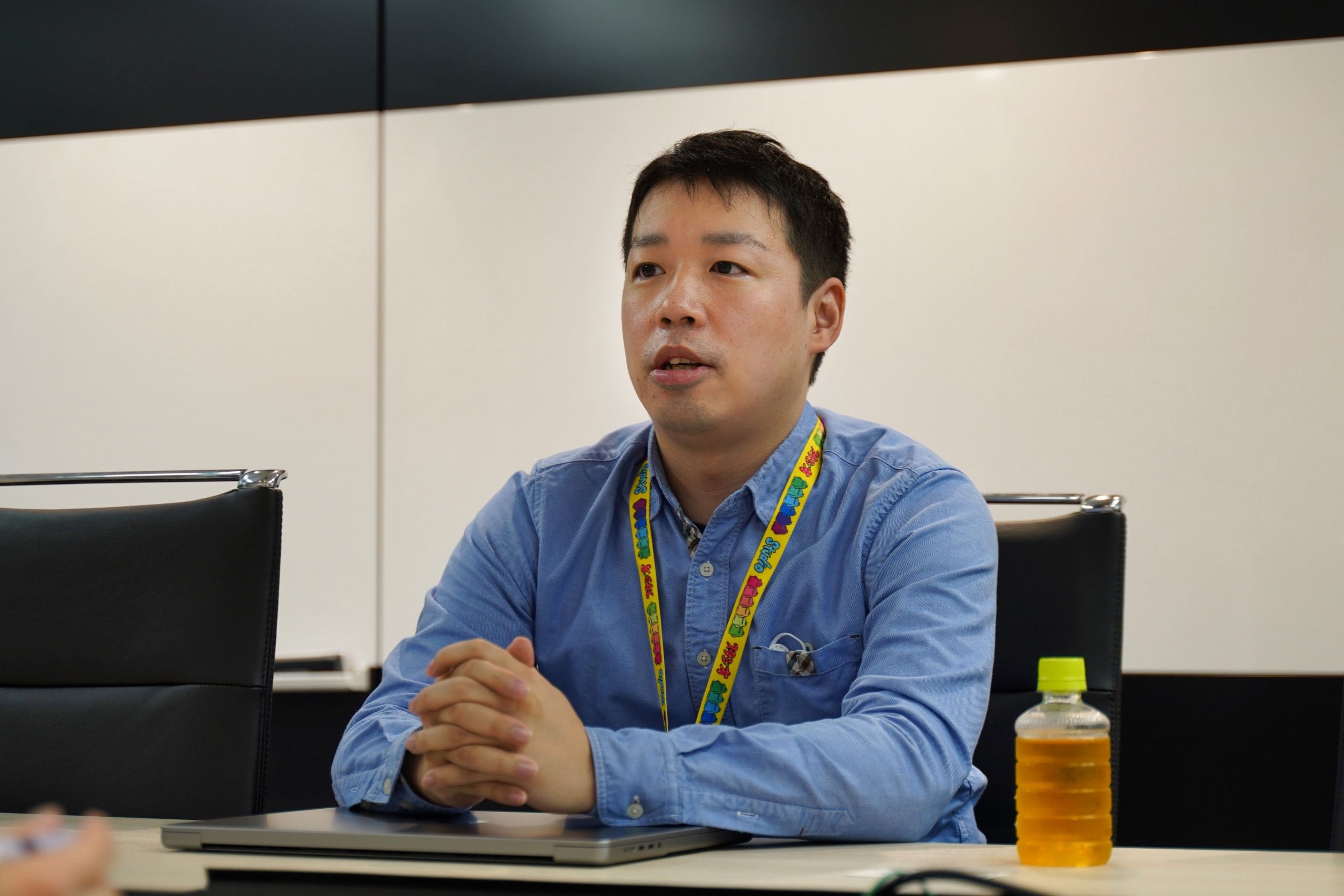
――― Part of the reason why you’re able to get work done while being considerate to the artists’ feelings is probably because you originally aspired to be an artist. Now, is there anything memorable that happened or that became a turning point for you in your career in the games industry?
It was when I had just joined the workforce after graduating, so it was almost 20 years ago. I learned from a senior colleague how to figure out what to do when the game could not load in time.
He asked what we should do if the next map doesn’t load when the character in a game tries to move into it, and my newly graduated self had no idea.
I could only come up with the usual answers, like reducing the texture sizes or playing the loading screen. That’s when he told me, “at times like this, we can just make the character fall over.”
In short, all we had to do was make the character fall over and load the game during that time. I was so shocked. I was like, “I didn’t know we could do that.”
The player makes the character run, so the map needs to load in a shorter time. But because the character runs, he falls. And when the character falls, the map can load in the time it takes for him to get back up.
It’s also not at all unnatural for a running character to fall over. And once the character falls over, the player would also try not to run too much after that.
――― That’s true, if they realize that the character will fall over if they run too fast, they might naturally stop running.
Definitely. I thought that was a really great idea. For example, if I were to program a machine for factory use, it wouldn’t be acceptable to have any sort of strange movement, would it?
But in games, if it is funny, natural, or fits in with the world building, then it is acceptable. The fact that there is often more than one solution to a problem is what makes the game industry so interesting. I thought to myself, “the game industry is amazing!” (laughs)
――― There are various approaches you can take to solve problems for different games. I feel like we just got a glimpse of the depth of the games industry. Your love for games is also really evident. (laughs)
Thank you very much. I got a little heated up there. (laughs)
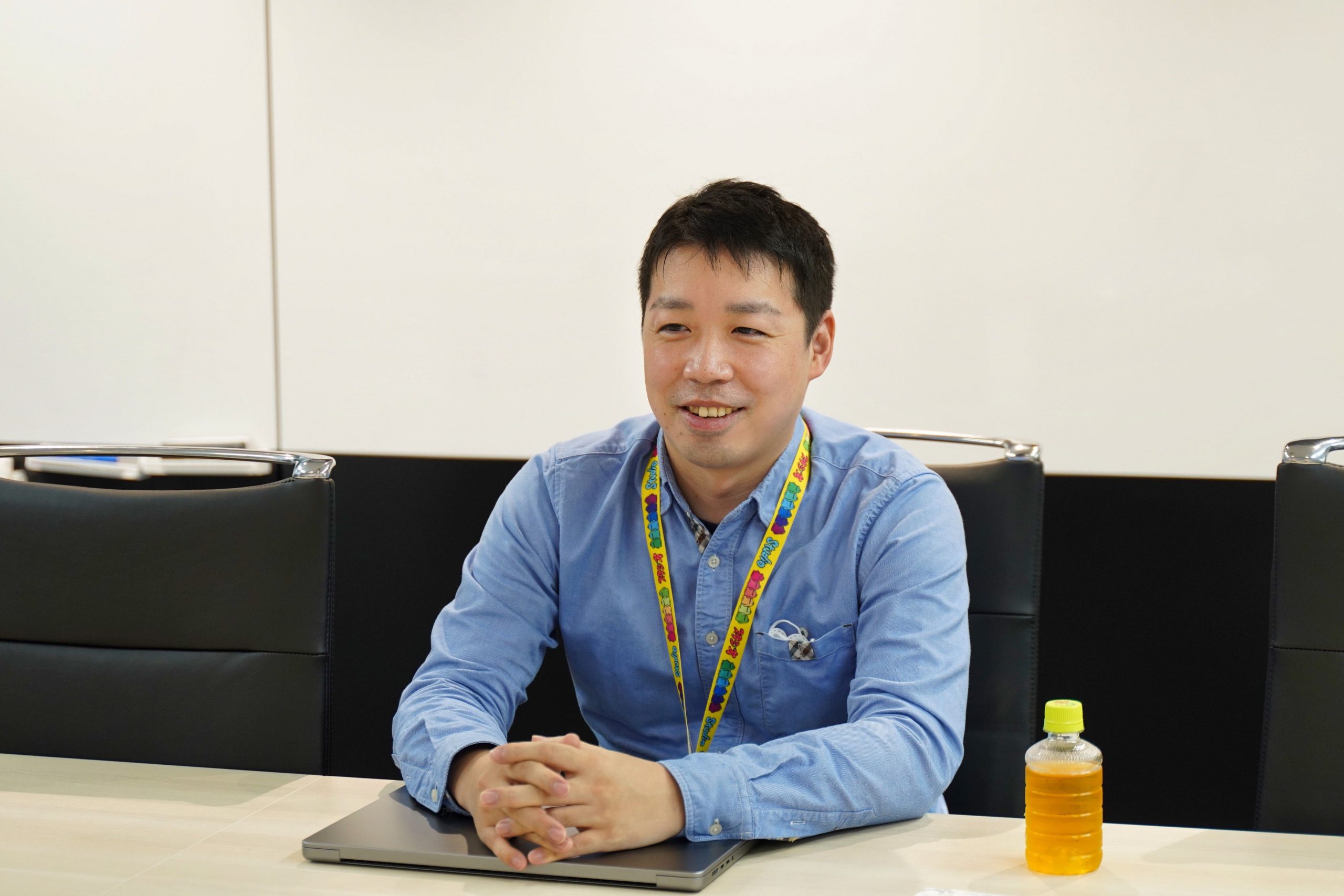
――― We also have the impression that there are many people in the industry who have strong preferences about the types of games they’re making. Do you have any personal rules that you absolutely stick to?
I always think that in order to make an interesting game, you have to have fun while working on it. It’s not just about having fun on my own, but I have a rule where I focus on creating an environment where the entire team has high expectations for the game we are making and can have fun while working on it.
Another one of my rules is proposing different approaches, like in situations like the one I mentioned earlier where artists run into difficult problems when creating visuals.
――― That’s true, the team’s motivation could easily be influenced by whether or not they have high expectations on the project they’re working on together. What made you think that the best environment is where the whole team thinks that the game they’re making is fun?
When we decided to launch a new original game at my previous job, there was a great deal of excitement within the company. Everyone on the team thought, “this is it! This is fun!”
Getting a taste of the energy from that time made me realize that when everyone believes the project they’re on will perform well, the vibes within the team and the company are better.
――― What do you do to make sure the team is in a good place?
For example, if you come up with a look that you think is really cool, you can post in the team chat, like “look at what I made!” (laughs)
The team is made up of people with different amounts of experience from senior staff to new graduates, but we try to encourage everyone to be proactive.
How do I say this… Even if I think I’m pretty savvy, at the end of the day, the only person who is happy with that is me. Instead of acting cool and waiting to show things off until they’ve been perfected, I try to candidly ask for opinions or throw out ideas. I believe this makes it easier for everyone to participate and speak their mind.
――― As for your hobbies, would you say that it’s creating games after all? I was a bit surprised to learn that you work on games even outside of your job here. (laughs)
Yes, I make games on my own time too. Programming game visuals at work means I don’t get to work on any other aspects of games. As a programmer, I would like to be involved with the whole game, not just those parts (laughs).
For example, I rarely write banner ad programs at work. But when making on games outside of my job, I get to work on those parts as well. And because of this diversion, I am able to put all my energy into the visual part of the game while I’m at work.
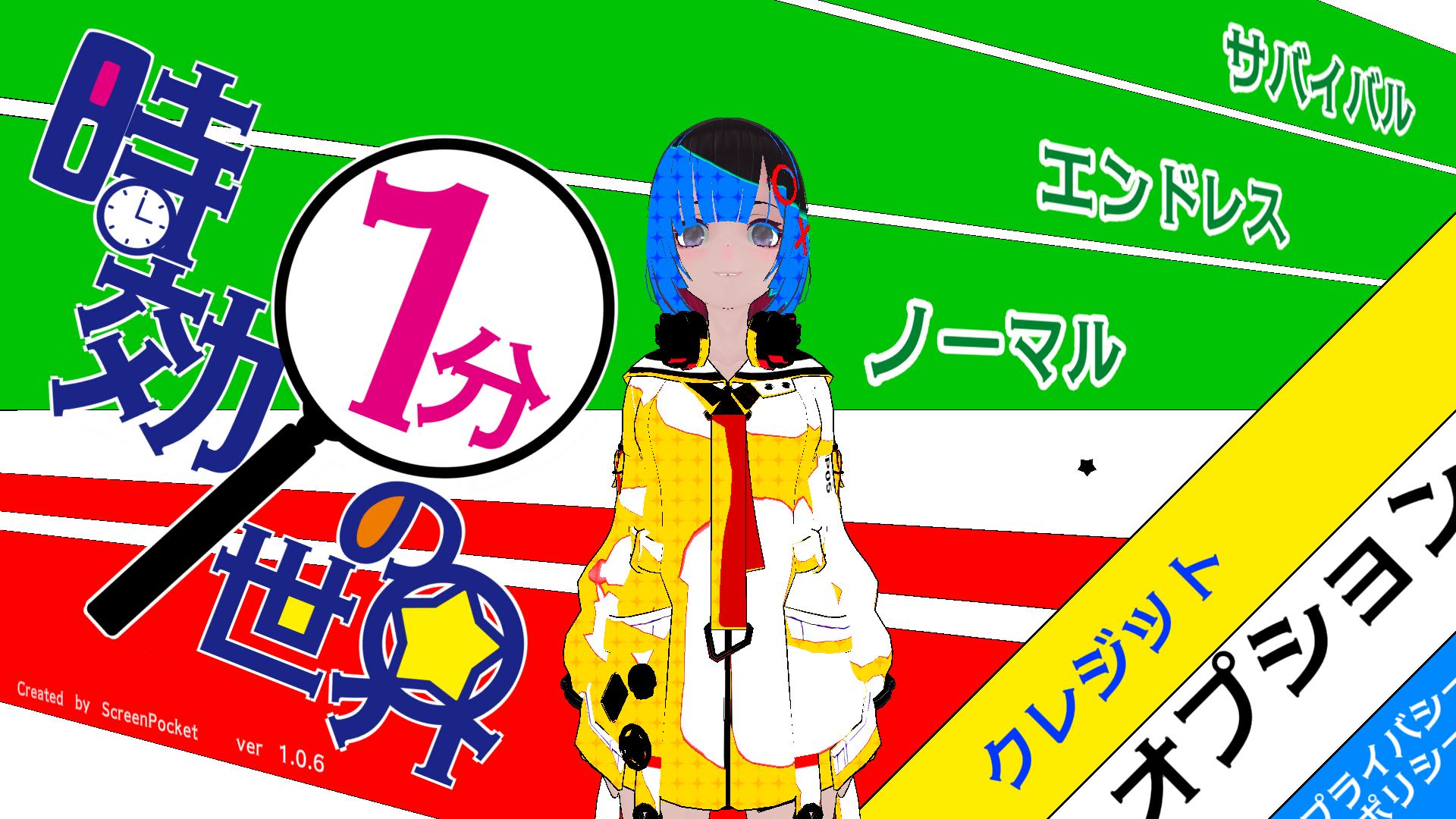 A smartphone game that Miyake-san developed on his own, titled “Jikou Ippun no Sekai”.
A smartphone game that Miyake-san developed on his own, titled “Jikou Ippun no Sekai”.
(lit. translation: a world where the statute of limitations is one minute)
――― Understanding all the other aspects of the game, in turn, benefits the visuals.
That’s right. For example, recognizing that the processing load in one area is heavy and toning down how extravagant I make the visuals. I think that familiarizing myself with the programming in parts other than the appearance is also connected to creating the visuals.
――― Are there other things you’d like to try or experiment with in the future?
While Unity has lowered the barriers to game development, I still feel that visual expressions in games, including Unity-like games and AI image generation, have become somewhat standardized.
I would like to think of ways to express my own unique taste or to have my own unique and recognizable style.
The tools are constantly evolving, and if you are not careful, you will end up with visuals that can be found anywhere. AI will be able to do more and more, but there are interesting aspects or expressions that only surface because human beings created them. I would like to face this challenge so that I can fully express my own unique characteristics.
――― Do you have a guiding principle?
I think it would be “nanikuso” (similar to “I’ll be damned”). My kindergarten teacher told me to just remember that word, even if I didn’t understand it.
The meaning of the word is “perseverance,” but if someone had attempted to teach me “perseverance” to me back then, I probably wouldn’t have remembered it. I was impressed by the fact that it was a word that even small children could easily remember and wanted to say.
When something goes wrong at work, I don’t just shrug it off, but I go to the next level and say, “well, I’ll be damned!”
There are many hardships in life, and I think helps me avoid feeling defeated or quitting too soon.
――― Miyake-san felt that the games industry was incredible from something a senior said. Twenty years later, his passion is still going strong, and he continues to strive for new visual expressions. We look forward to what he makes next! Thank you very much!
[Related articles] Read these interviews if you’re interested in what our engineers do!
What Made You Think to Use AI to Make Games More Fun? (Yohei Hase)
What Makes a Technical Director? The Importance of Accumulating a Broad Range of Experience (Keita Noto)




